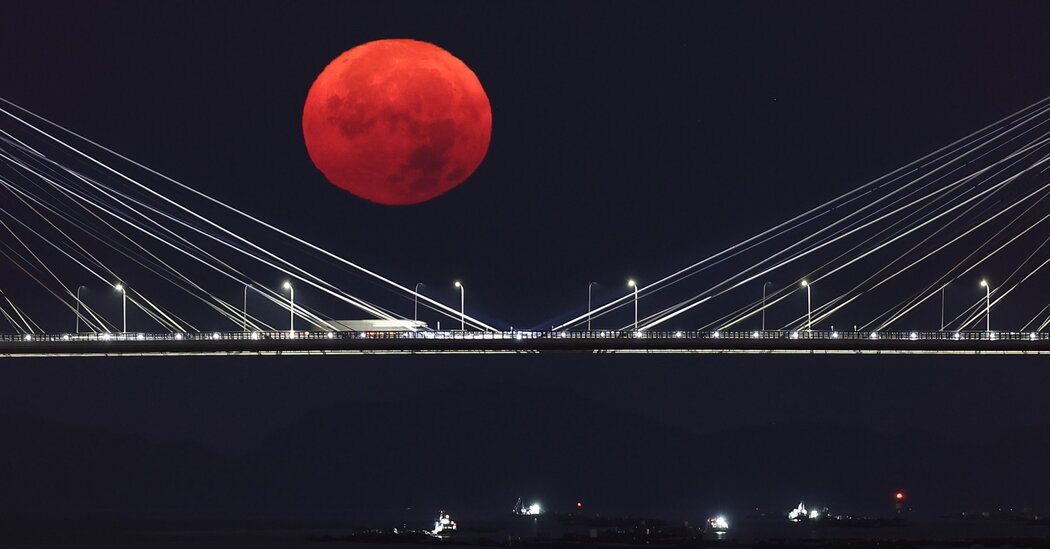The celestial event, which is visible from Sunday to Wednesday morning, probably won’t happen again until 2037.
Stargazers are being treated to an astronomical show this week as an infrequent blue supermoon lights up the night sky, one of the largest and brightest full moons of the year.
Visible from late Sunday through Wednesday, it will be the first of the year’s four consecutive supermoons. But it’s a special instance, because Sunday’s supermoon is also a seasonal blue moon — the third full moon in a season of four.
The full moon will appear larger and brighter than usual.
The term “supermoon,” coined by the astrologer Richard Noelle in 1979, refers to a moment when the full moon is closest to Earth on its orbital path. It’s not an official astronomical term, but it is used by the lay-stargazers among us.
A “blue” moon bears no connection to the color blue, and the moon won’t have a colorful tinge. Instead, a blue moon is used to describe what is effectively an additional full moon, one that violates the rule of thumb, that there is one full moon in a month, or three full moons in a season.
Supermoons, full moons and blue moons occur on their own, but it’s not often that they all happen at the same time. According to NASA, roughly 25 percent of full moons are supermoons, and only 3 percent of full moons are blue moons. From Sunday through Wednesday morning, they’ll occur simultaneously.
Supermoons can appear 30 percent brighter than the average moon.
Like “supermoon,” the term “blue moon” is also colloquial, but blue moons are infrequent — more so than supermoons — and tend to occur every few years.
